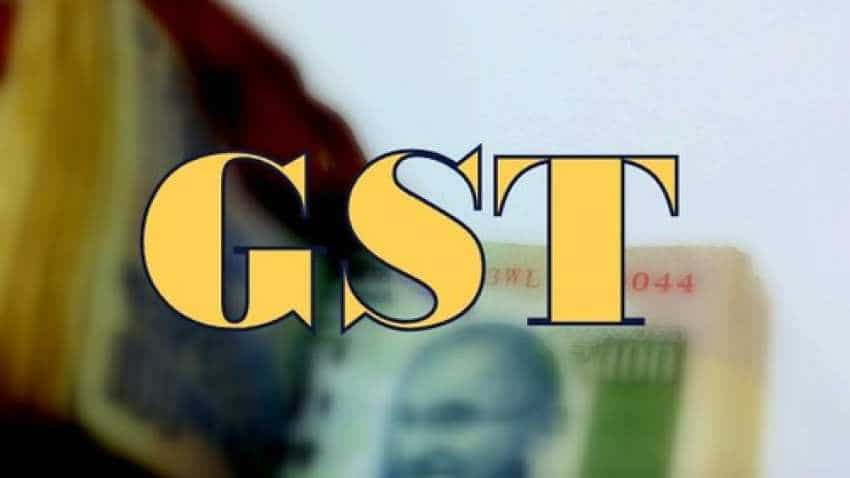GST annual returns forms: Experts expect reconciliation with Income Tax Returns
Goods and Services Tax (GST) was rolled out on July 1, 2017, and this is the first year when businesses will have to file annual returns (GSTR-9) for 2017-18 fiscal by December 31, 2018. Also those businesses with turnover of more than Rs 2 crore will have to file audit reports along with the annual returns.

The format for annual returns and audit is likely to be approved by the GST Council in its meeting on July 21 and industry expects that there could be some reconciliation with annual IT returns as the government aims to check tax evasion.
Goods and Services Tax (GST) was rolled out on July 1, 2017, and this is the first year when businesses will have to file annual returns (GSTR-9) for 2017-18 fiscal by December 31, 2018. Also those businesses with turnover of more than Rs 2 crore will have to file audit reports along with the annual returns.
The revenue officers have prepared a draft of the annual returns form, which will be deliberated by the all powerful GST Council chaired by Union Finance Minister and comprising state finance ministers as members, in its meeting on July 21. The GST Network, which manages the IT backbone for the new indirect tax regime will thereafter finalise the software to enable businesses to file the returns.
Tax experts said they expect the annual returns form to be in line with that in the erstwhile Value Added Tax (VAT) regime, with some columns for reconciliation with Income Tax returns and audit report. They expect the forms to be made available online by October, so that the returns could be filed within the December due date.
Deloitte India Partner M S Mani said: "Considering the fact that the key objective of GST is to expand the tax base, it is expected that the GST annual return would require some information related to annual accounts and income tax returns, in addition to the details which were required to be submitted in the erstwhile VAT annual returns".
They expect that in the VAT era, assessments were made on the basis of annual returns and the same process should be followed in the GST regime as well.
Experts said the businesses might commit some error in the monthly returns filed and those could get corrected in the annual returns and hence assessment should be on the basis of annual returns.
EY India Tax Partner Abhishek Jain said: "Given the first year of GST, the industry would expect the Annual Return format to be simple and if possible only require PAN based data reconciliation with the financials and not state wise or GSTIN wise data reconciliation with financials. The said demand essentially being on account of most company IT systems not being configured to extract state wise financials".
Under the VAT regime, businesses were required to file returns in every state where they are registered and hence linking their annual returns with that of the same filed under IT returns was not feasible.
AMRG & Associates Partner Rajat Mohan said: "Some of the Industry expectations are online forms with least manual intervention seeking selected information, clarity on the need for annual state-wise financial statements and finally, deferment of GST audits in the first year".
But, with GST being PAN based registration, it would be easier to reconcile the sales and purchases with that reported in IT returns.
WATCH THIS ZEE BUISINSS VIDEO HERE:
As per the IT return forms notified by the income tax department, businesses filing ITR-4 (Presumptive Income From Business & Profession) will have to give information regarding turnover/gross receipt reported for GST as well as GST Identification Number (GSTIN). Besides, in ITR-6 which is to be filed by companies, businesses have to specify GST paid or refunded or credit outstanding.
Over 1.14 crore businesses are registered under the GST regime. Of these, about 18 lakh businesses have opted for composition scheme.
03:33 PM IST






 Budget Expectations 2019: Anand Mahindra says lowering GST on automobiles would help economy, employment
Budget Expectations 2019: Anand Mahindra says lowering GST on automobiles would help economy, employment Looking to buy a house? Wait! GST on residential properties likely to be slashed
Looking to buy a house? Wait! GST on residential properties likely to be slashed Realtors give up on Budget 2019 saying FM will woo voters, not industry
Realtors give up on Budget 2019 saying FM will woo voters, not industry GST Council forms GoM on real estate tax rate
GST Council forms GoM on real estate tax rate Telugu star Mahesh Babu's Axis Bank, ICICI Bank accounts frozen after GST dept crackdown
Telugu star Mahesh Babu's Axis Bank, ICICI Bank accounts frozen after GST dept crackdown